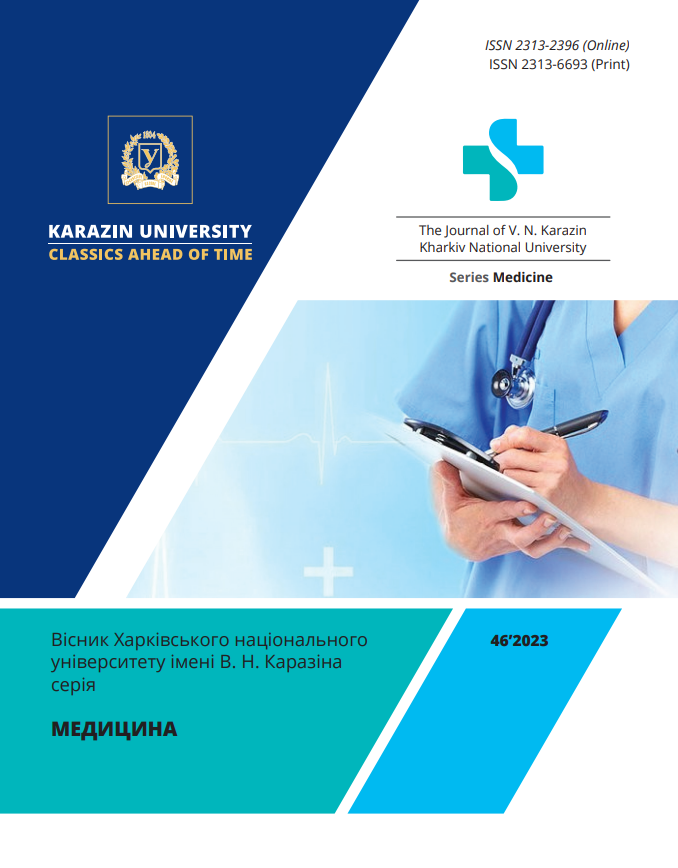Emergent infection: atypical clinical cases of monkeypox (updated review)
Abstract
Abstract. The international emergency caused by monkeypox has forced the world to pay attention to this infection, as it has spread beyond endemic regions and no control measures have been developed. The virus began to be transmitted to humans not only by contact, but also by airborne droplets, fecal-oral, and vertical. There have been cases of in-hospital spread, outbreaks after eating contaminated animal meat, and swimming in water. Pregnant women, children under 8 years of age, and HIV-infected people require special attention due to the risk of complications. Therefore, it is important for doctors of all levels to be aware of new ways of spreading the infection, atypical manifestations of the disease for differential diagnosis, timely detection and further treatment. Aim. To conduct an up-to-date literature review of clinical cases of monkeypox in people at increased risk of developing atypical course and complications - in HIV-infected people (due to the virus's damage to the immune system) and children under 8 years of age (due to insufficiently formed immunity). Materials and Мethods. Scientific articles from the google scholar database were analyzed, among which 7 articles with 9 different case descriptions were selected to conduct an in-depth study of clinical cases among people from different non-endemic countries who have insufficient immunity (WHO experts consider African and Asian countries to be endemic). Results. Most of the atypical cases were observed among homosexual men receiving antiretroviral therapy or pre-exposure prophylaxis for HIV infection. The characteristic rash appeared after unprotected oral or anal sex on the corresponding body parts. As for the disease in young children who do not have their own immunity, the mechanism of transmission was contact or vertical. Conclusions. Our analysis of the literature shows the prevalence of monkeypox in the male gender group with non-traditional sexual orientation. Based on the analysis, HIV-infected homosexuals, mostly men, are the main risk group for infection with this emergent orthopoxvirus. At the same time, people with primary and secondary immunodeficiency conditions remain particularly vulnerable. It is important that the atypical clinical course complicates timely clinical and laboratory diagnosis and even the initiation of treatment, which can lead to severe and fatal complications (in endemic regions among children and debilitated HIV-infected persons). It is advisable to take timely anti-epidemic measures with the implementation of specific prophylaxis for vulnerable categories of persons (listed above, as well as occupational risk groups), along with an increase in epidemic surveillance and strict infection control in compliance with International Health Regulations at checkpoints along the entire state border.
Downloads
References
Lai CC, Hsu CK, Yen MY, Lee PI, Ko WC, Hsueh PR. Monkeypox: an emerging global threat during the COVID-19 pandemic. Journal of Microbiology, Immunology and Infection. 2022;55(5):787-794. DOI: https://doi.org/10.1016/j.jmii.2022.07.004
Gedela K, Da Silva Fontoura, D, Salam A, Gorman G, Golden J, O’Hara G, McOwan A. Infectious proctitis due to human Mpox. Clinical Infectious Diseases. 2023;76(3):e1424-e1427. https://doi.org/DOI: 10.1093/cid/ciac713
Mitjà O, Ogoina D, Titanji BK, Galvan C, Muyembe JJ, Marks M, Orkin СM. Monkeypox. The Lancet. 2023;401(10370):60-74. DOI: https://doi.org/10.1016/S0140-6736(22)02075-X
Petersen E, Kantele A, Koopmans M, Asogun D, Yinka-Ogunleye A, Ihekweazu C, Zumla A. Human monkeypox: epidemiologic and clinical characteristics, diagnosis, and prevention. Infectious Disease Clinics. 2019;33(4):1027-1043. DOI: https://doi.org/10.1016/j.idc.2019.03.001
Sokol AM, Randyuk YO, Sydorchuk AS, Bogachyk NA, Venglovska JV, Kaspruk NA, Oliynyk OM. Ridkisna profesiina infectia:dwa vipadku paravaccinu-virusnoi khvorobu doyarok na Bukovuni. 2018;4(24):48-51. [in Ukrainian]. DOI: https://doi.org/10.15587/2519-4798.2018.132591
Angelo KM, Smith T, Camprubí-Ferrer D, Balerdi-Sarasola L, Menéndez MD, Servera-Negre G, et. al. Epidemiological and clinical characteristics of patients with monkeypox in the GeoSentinel Network: a cross-sectional study. The Lancet Infectious Diseases. 2023; 23 (2): 196–206. DOI: https://doi.org/10.1016/S1473-3099(22)00651-X
Peters SM, Hill NB, Halepas S. Oral manifestations of monkeypox: a report of 2 cases. Journal of Oral and Maxillofacial Surgery. 2022; 80 (11): 1836–1840. DOI: https://doi.org/10.1016/j.joms.2022.07.147
Patrocinio-Jesus R, Peruzzu F. Monkeypox genital lesions. New England Journal of Medicine. 2022;387(1):66-66. DOI: https://doi.org/10.1056/NEJMicm2206893
Ajmera KM, Goyal L, Pandit T, Pandit R. Monkeypox–An emerging pandemic. IDCases. 2022;29:е01587.DOI: https://doi.org/10.1016/j.idcr.2022.e01587
Sejvar JJ, Chowdary Y, Schomogyi M, Stevens J, Patel J, Karem K, Damon IK. Human monkeypox infection: a family cluster in the midwestern United States. The Journal of infectious diseases. 2004;190(10):1833-1840. https://doi.org/DOI: 10.1086/425039
Ramnarayan P, Mitting R, Whittaker E, Marcolin M, O’Regan C, Sinha R, et. al. Neonatal monkeypox virus infection. N. Engl. J. Med. 2022;387(17): 1618-1620. DOI: https://doi.org/10.1056/NEJMc2210828
Saunders KE. Monkeypox in a young infant—Florida, 2022. MMWR. Morbidity and Mortality Weekly Report. 2022;71(38):1220-1221. DOI: https://doi.org/10.15585/mmwr.mm7138e3
The Journal of V. N. Karazin Kharkiv National University, series Medicine has following copyright terms:
- Authors retain copyright and grant the journal right of first publication with the work simultaneously licensed under a Creative Commons Attribution License that allows others to share the work with an acknowledgement of the work’s authorship and initial publication in this journal.
- Authors are able to enter into separate, additional contractual arrangements for the non-exclusive distribution of the journal’s published version of the work, with an acknowledgement of its initial publication in this journal.
- Authors are permitted and encouraged to post their work online prior to and during the submission process, as it can lead to productive exchanges, as well as earlier and greater citation of published work.




